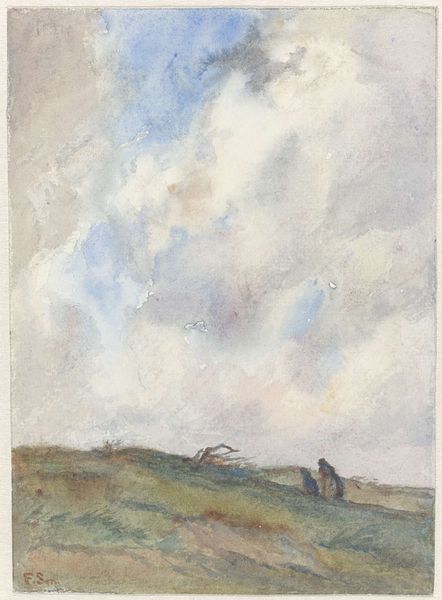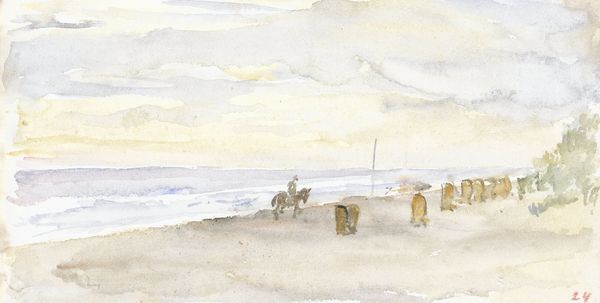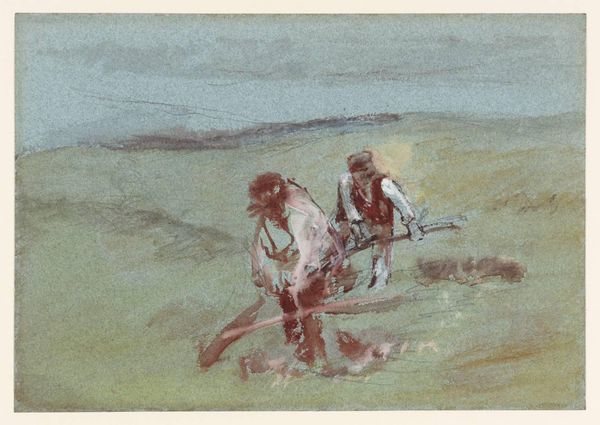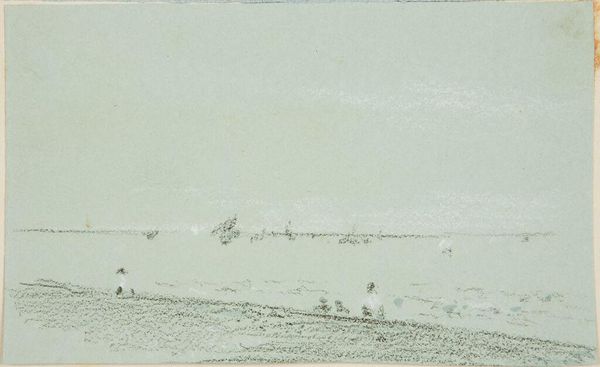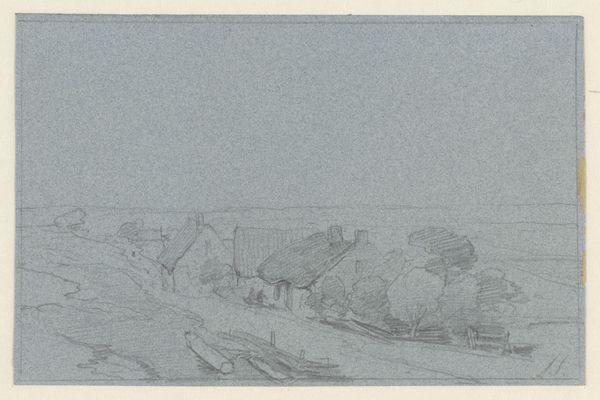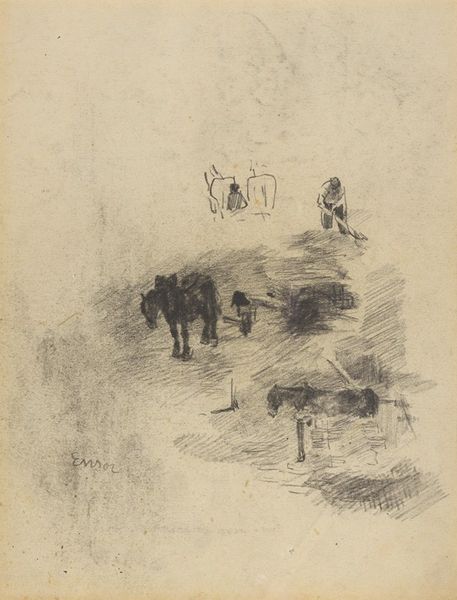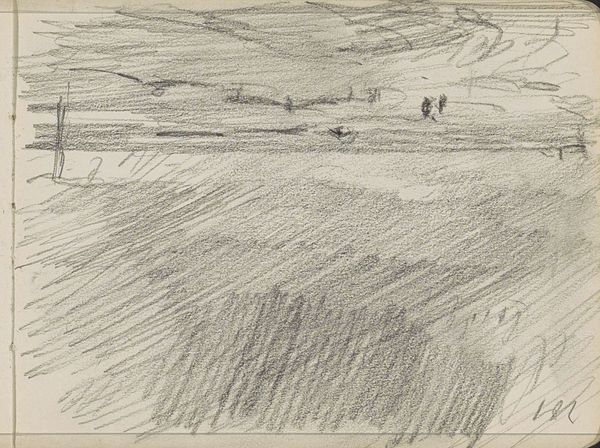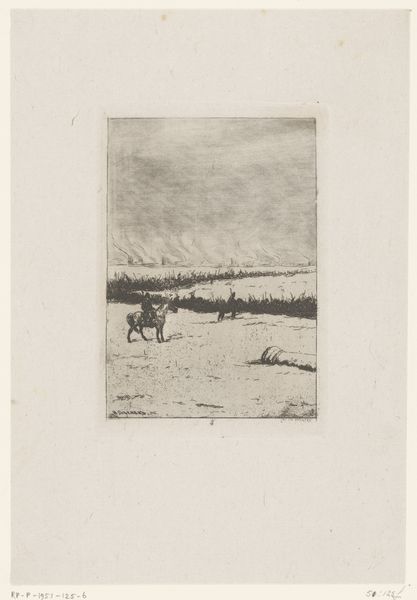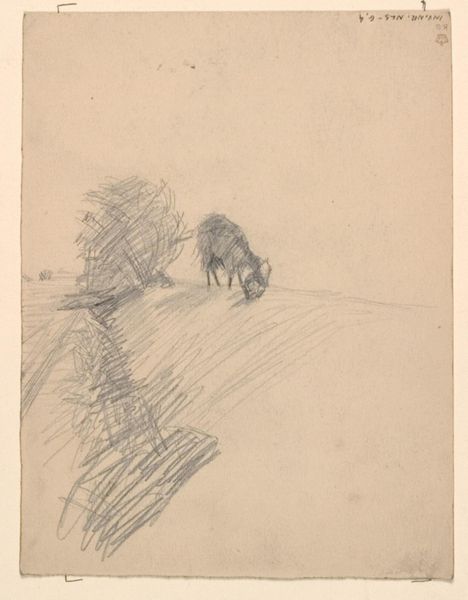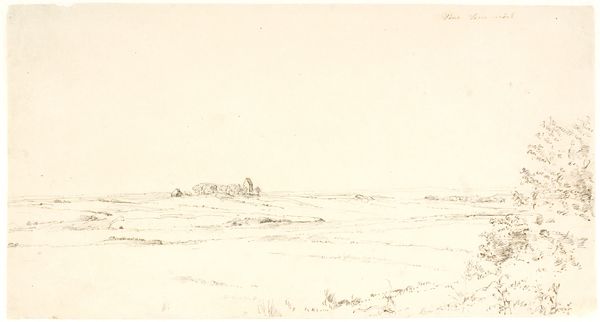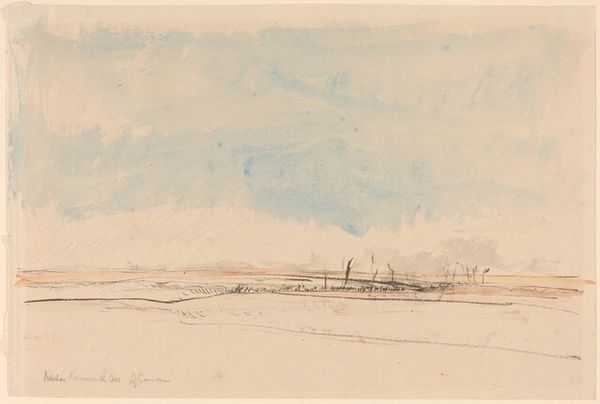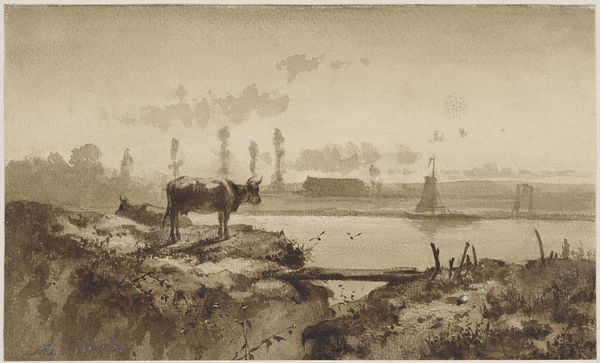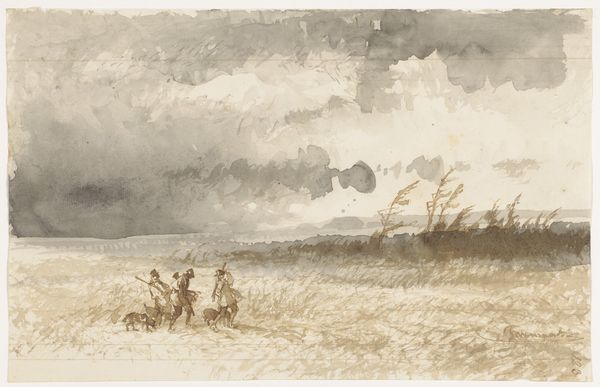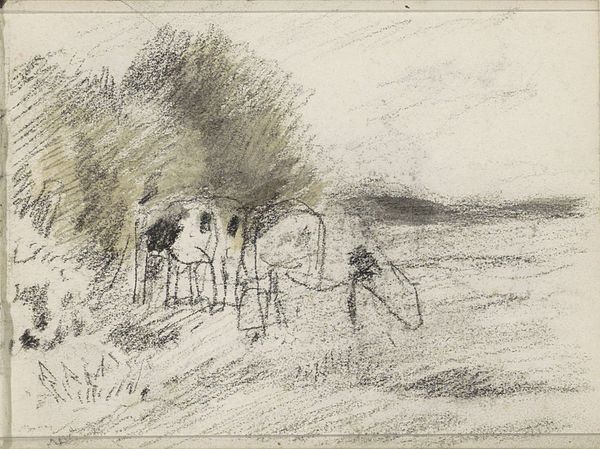
watercolor
#
impressionism
#
landscape
#
watercolor
#
watercolour illustration
#
sketchbook art
#
realism
Dimensions: height 175 mm, width 130 mm
Copyright: Rijks Museum: Open Domain
Curator: We're now looking at Adolf le Comte's watercolor, "Winterlandschap met paard en wagen," likely created between 1860 and 1921. Editor: A truly bleak yet captivating image. The near-monochromatic palette lends it a desolate, ethereal quality, almost like a fading memory. Curator: Exactly. The impressionistic touches, particularly in the rendering of the sky and the sparse vegetation, convey a sense of fleetingness. It captures a mood more than a literal representation. Consider the application of watercolor here, very loosely handled to suggest rather than define forms, like the horse-drawn carriage moving away from us. Editor: And how does this speak to the material conditions of the time, though? A lone wagon, likely for hauling goods or perhaps a farmer heading home… One imagines a harsh existence dependent upon the labor of both humans and animals facing brutal elements, with art offering perhaps small respites from reality. The labor intensity certainly challenges high art preconceptions. Curator: A valid point. Though my focus stays primarily on analyzing Le Comte's compositional choices and their interplay with techniques, such as the stark contrast between the defined carriage and the amorphous landscape, and interpreting the semiotics, like the solitary journey. The piece embodies the picturesque qualities with very loose and atmospheric execution. Editor: Well, if we delve into material terms, we see the exploitation in this image. These individuals needed affordable transport to travel across barren frozen roads and move resources. Watercolour here is as simple as these means would have been at the time. These weren’t oil paintings, or carefully posed commissions. These sketches represent a lifestyle rooted firmly into raw necessity. Curator: Regardless of the perspective we take on Le Comte’s artwork, it seems, ultimately, that each of these qualities enriches our appreciation. Editor: Indeed, together we gain a fuller vision that merges intention, means, and impact to see how the landscape, human effort, and even the watercolors themselves shaped what this artwork became.
Comments
No comments
Be the first to comment and join the conversation on the ultimate creative platform.
